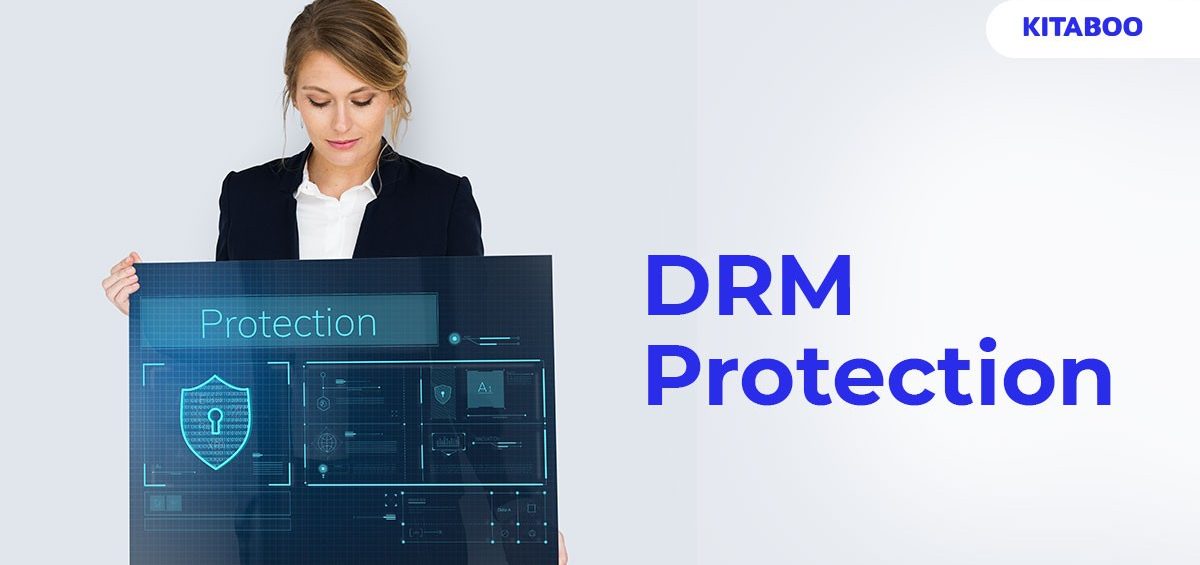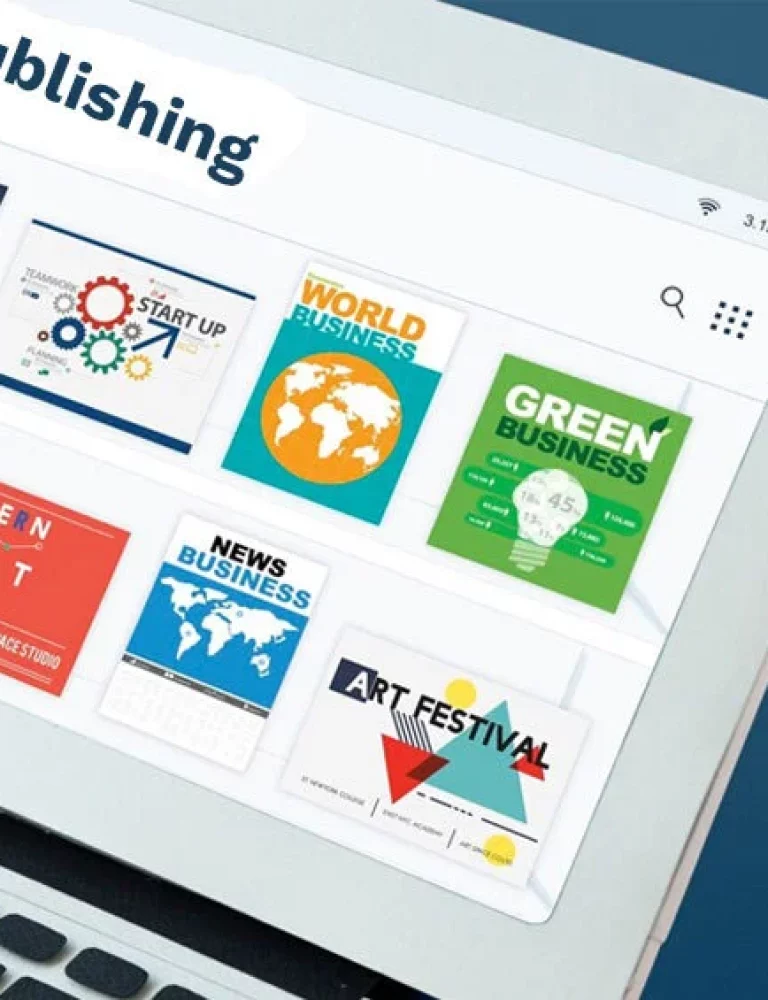With digital advancements, the publishing industry has started undergoing a digital transformation. Owing to this, eBooks are slowly becoming a popular choice among authors, publishers, and readers. In the coming years – by 2027 – eBooks are expected to become the preferred choice of 1.1 billion digital users.
The increasing popularity of eBooks brings the imminent threat of online piracy and copyright infringement to the forefront, making the provision of eBook protection paramount. The necessity to protect the content of eBooks brings ePublishing platforms like KITABOO into play.
In this blog, we will delve into the meaning of DRM, its key features, the importance of DRM-protected eBooks, and the trends and predictions set to shape its future.
Table of Contents:
- What Is DRM And Its Features?
- Why Is DRM Protection Important For eBooks?
- Trends And Predictions For DRM-Protected eBooks
What Is DRM And Its Features?
Digital Rights Management is a means to protect the copyright of digital content and prevent illegal downloading and sharing of unauthorized files across the internet.
By employing technology and protocols, DRM systems act as a digital shield against the unauthorized editing, copying, and distribution of eBooks, enabling publishers and content creators to maintain control over their digital assets.
DRM systems are equipped with features such as encryption, watermarking, access control, and usage tracking. These features enable authors and publishers to restrict access to eBooks to only those who have paid for them.
Why Is DRM Protection Important For eBooks?
Since traditional copyright laws don’t encompass online media, people can easily copy, edit, and share the content of eBooks across the internet and social media platforms. They can repurpose and even claim ownership over someone else’s content.
This unauthorized use and access pose a grave risk to the intellectual property rights (IPR) of authors and publishers and even causes them to lose out on revenue. This loss calls for some sort of protective measure and brings the role of DRM into sharp focus.
DRM protection safeguards against revenue loss and plays an important role in eBooks, as follows:
- Prevents online piracy and duplication of content
- Protects the authenticity of content by preventing unauthorized use
- Restricts and monitors user access to prevent IPR theft
- Ensures the secure distribution of content and the confidentiality of data containing sensitive information
- Ensures adherence to multiple international regulatory standards
Trends And Predictions For DRM-Protected eBooks
Having emerged in the 1980s after a serious discourse about digital content protection, DRM has undergone many changes over the years.
Now available as a cloud-based software system, DRM is still set to go through many more changes to overcome its shortcomings. Some of them include restricted user access, limited eBook usability, and vulnerability to security circumvention by hackers.
To find out how DRM protection systems could overcome their challenges – let’s explore the trends and predictions about DRM-protected eBooks.
Increasing Use Of Social DRM
An interesting trend for DRM-protected eBooks is the increasing use of enhanced social DRM. Social DRM refers to the embedding of visible and invisible digital watermarks in eBooks. The watermarks contain personal information like the name, email address, etc., of the buyer of the eBook.
Advanced-level social DRM acts as a deterrent to piracy and the illegal distribution of eBooks. In addition, it helps the publishers trace any unauthorized activities back to the owner of the eBook.
Subscription-Based Platforms And Cross-Platforms
Another intriguing trend for DRM-protected eBooks is the recognition of subscription-based platforms like Amazon’s Kindle. These platforms charge a subscription fee and provide access to an unlimited number of eBooks.
Protected by DRM, these eBooks can only be accessed on the platform whose monthly fee the reader has already paid. Based on this trend, a relevant prediction has emerged. It revolves around the development of cross-platform DRM standards in the future.
These standards will allow readers to access and transfer DRM-protected eBooks across devices, no matter the platform while ensuring strong copyright protection.
Incorporation Of Blockchain Technology
Yet another notable trend is the integration of blockchain technology (a technology that ensures highly-secure transactions for cryptocurrencies like Bitcoin) into DRM systems.
Blockchain technology uses a cutting-edge database system to permit transparent information sharing. The database stores data in blocks connected by a chain, which cannot be altered or deleted without permission from the network.
As a result, blockchain technology stands as an immutable ledger for recording transactions, providing an open and safe way to verify and track the distribution and ownership of eBook content. It thus aids in preventing unauthorized copying and distribution of eBooks and makes it easier for content creators to commercialize their work.
Integration Of AI And ML
A new emerging trend is the incorporation of technologies like AI (artificial intelligence) and ML (machine learning) into DRM systems.
AI can be used to examine usage patterns, automate tracking of digital content, and identify suspicious activity. AI can further predict breaches of digital rights and prevent them beforehand to ensure the enforcement of copyright laws.
Simultaneously, ML can be used to continuously enhance and modify DRM systems in accordance with user behavior. In this way, the integration of AI and ML can provide new methods to identify and stop online content piracy.
Enhanced Reader Experience
Considering the shortcomings of DRM, it is predicted that the DRM protection of the future will be more unobtrusive and flexible.
DRM systems will find a balance between ensuring unbreakable copyright protection and providing a seamless reader experience. DRM systems will also become more intuitive and user-friendly, thus promoting increased adoption of DRM-protected eBooks.
The End Note
By now, you are aware of the importance of DRM protection for eBooks and how that’s going to become more enhanced in the future. So now, if you plan to publish eBooks in the future, using ePublishing software (with DRM protection) like KITABOO which is paramount to safeguarding from online piracy and copyright infringement.
KITABOO is a cloud-based publishing platform that adds a strong shield of encryption and DRM protection to your eBooks. KITABOO allows you to create, publish, and distribute DRM-protected eBooks on multiple platforms, where they can only be accessed with unique access codes. As a firm believer in providing a highly secure eBook distribution and reader experience, KITABOO is the trusted preference of more than 15 million people across 30 countries.
To know more about DRM protection services, get in touch with KITABOO.
Suggested Reads:
- Corporate Training Solution Platform
- 5 Best PDF eBook Readers for Windows and Android Users
- 11 Best Ebook Creation Softwares
- Simple Step-by-Step Guide to Creating an ePUB
- What Is Interactive Storytelling and Why It Is Important?
- Best eBook Creation Softwares
- Is Online Education Better than Traditional Education?
- Free Publishing Sites for Independent Publishing
Discover How An Ebook Conversion, Publishing & Distribution Platform Can Help You
Kitaboo is a cloud-based content platform to create-publish & securely distribute interactive mobile-ready ebooks.
You May Also Like








